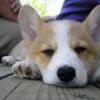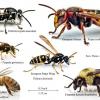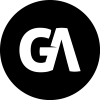Troubles baking global illumination into textures in 3D Studio Max...
Alrighty, please forgive me if my terminology is off. I'm more of a programmer than an artist.
What we (myself and a friend, although mostly the friend) are trying to do is do some seudo-global illumination on a model, and bake that into the texture of the model. This way we can render the model in-engine and still have it look like it is being lit by some form of global illumination. I did the preliminary model in Maya (without any texturing) and passed it on to my friend, who is more knowledgable with texturing in a .fbx format. The modelling was done in Maya (as I am a bit more familiar with Maya, but haven't learned how to properly texture things in Maya yet), and exported to a .fbx format. It was then imported into 3D Studio Max where my friend did the texturing, and attempted to bake some form of general lighting into the texture. This is where things didn't quite work as expected.
Here is a shot of the model, untextured, running in-engine, just so you can see the basic shape of the model.
Here is the texture map that was generated by 3D Studio Max after attempting to bake the global illumination into the texture (warning - it's a pretty big 1024x1024 texture!).
Here's what happens when we tried exporting it back into a .fbx and running it in-engine.
I am not sure if you can see it, but the texture coordinates on the model are screwed, and the texture that everything was baked into is large, and pretty grainy. It also looks like it has a lot of wasted space in it.
So here's my question: Can anyone give us a hand with this? I tried googling on how to bake global illumination into a texture in both Maya and 3D Studio Max, and the only things that came up were a few random articles that aren't of much help.
I will get my friend to post on here tomorrow exactly what he did, as I am not very familiar with 3D Studio Max.
So, any takers?
EDIT: Fix0red broked links. My bad.
Howdy - This is Moe's Friend.
I applied a texture with a UVW map to the model, added a skylight and rendered with light tracer, and baked the result into the model using "Render to Texture".
My final model that we exported as an fbx has a UVW map that Render to Texture generated applied as an assign UVW modifier.
My question is: Does the fbx format embed uvw coordinate information? Or do you have to apply that to your model in XNA seperatley?
I applied a texture with a UVW map to the model, added a skylight and rendered with light tracer, and baked the result into the model using "Render to Texture".
My final model that we exported as an fbx has a UVW map that Render to Texture generated applied as an assign UVW modifier.
My question is: Does the fbx format embed uvw coordinate information? Or do you have to apply that to your model in XNA seperatley?
Don't quote me on this, but I'm pretty sure it does.
laziness is the foundation of efficiency | www.AdrianWalker.info | Adventures in Game Production | @zer0wolf - Twitter
Your RTT is using a new set of UV coords. You have two options.
Rebake the AO map making sure to select "Use Existing UVW Channel" instead of "Automatic Unwrap/New UV Channel" or whatever it is called in the Max RTT dialog. This is only feasible if your texture coords are unique.
Support a second set of UV/texture coords in-game. This is somewhat of a hassle to do unless there is a systematic reason (like pre-baking a bunch of AO and lightmaps for all your scene geometry). However it is still doable, not sure how FBX handles multiple UV channels but I'm pretty sure it is supported.
If your friend is just baking an AO pass (you wouldn't bake GI into an object's texture except in very specific cases... maybe only for certain scene geo. AO is not GI, look it up.), then he should use the first method mentioned here and just multiply and manipulate it into the object's diffuse and specular textures.
Rebake the AO map making sure to select "Use Existing UVW Channel" instead of "Automatic Unwrap/New UV Channel" or whatever it is called in the Max RTT dialog. This is only feasible if your texture coords are unique.
Support a second set of UV/texture coords in-game. This is somewhat of a hassle to do unless there is a systematic reason (like pre-baking a bunch of AO and lightmaps for all your scene geometry). However it is still doable, not sure how FBX handles multiple UV channels but I'm pretty sure it is supported.
If your friend is just baking an AO pass (you wouldn't bake GI into an object's texture except in very specific cases... maybe only for certain scene geo. AO is not GI, look it up.), then he should use the first method mentioned here and just multiply and manipulate it into the object's diffuse and specular textures.
-------------www.robg3d.com
This topic is closed to new replies.
Advertisement
Popular Topics
Advertisement
Recommended Tutorials
Advertisement









